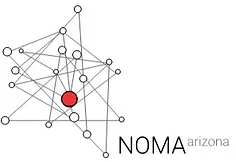
- This event has passed.
Chapter Meeting – August 2022
August 9, 2022 @ 6:00 pm - 7:15 pm

We’re back from our summer break and have an exciting chapter meeting coming up on Tuesday, August 9th at 6pm at multistudio (formerly Gould Evans).
Our friends from the Tracing Architecture podcast will be in attendance to record a live session about Decolonizing Architecture: Regaining and Reincorporating the Erased Cultural Knowledge into Design and Design Education. The session is part of the AIA College of Fellows Emerging Professionals Component Grant.
Panelists
- Wanda Dalla Costa, AIA, OAA, AAA, LEED A.P. — Arizona State University
- Shundana Yusaf شندانه یوسف — University of Utah (joining remotely)
- Nicholl Hubbell, Assoc. IIDA, WELL AP — Shepley Bulfinch
- Luis Cruz-Martinez, AIA, LEED AP — Shepley Bulfinch
- Christopher Locke — Designing in Color (joining remotely)
- Rubin Quarcoopome — Designing in Color (joining remotely)
Please RSVP here so we know how many complimentary snacks to provide. If you’d like to attend virtually, please register on Zoom here.
Masks will be required for those not vaccinated.
This is your chance to connect with the chapter members and committees, learn what events are coming up, sign up to volunteer, and get involved.
#ourstrengthisourdiversity
About the Panelists
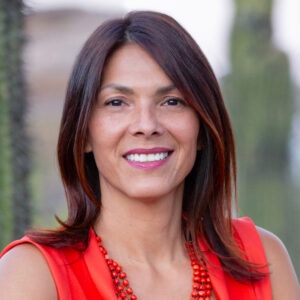
Wanda Dalla Costa, AIA, LEED A.P. is a member of the Saddle Lake Cree Nation. She is an architect and an Institute professor and was recently named the 2022 Honorary Fellow of the Royal Architecture Institute of Canada. At Arizona State University, she is the director and founder of the Indigenous Design Collaborative, a community-driven design and construction program, which brings together tribal community members, industry and a multidisciplinary team of ASU students and faculty to co-design solutions for tribal communities. Dalla Costa was part of Unceded at the 2018 Venice Biennale where she joined 18 Indigenous architects from across Turtle Island to share an Indigenous vision of the future. Her firm, Tawaw Architecture Collective (www.tawarc.com) is based in Phoenix.
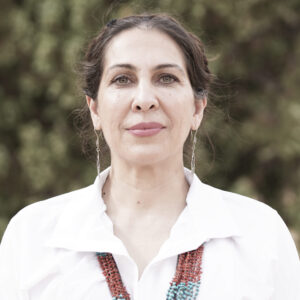
Shundana Yusafشندانه یوسف is an Associate Professor of Architectural History and Theory at the School of Architecture, Uni¬versity of Utah. Her scholarship juxtaposes colonial/ postcolonial history with sound studies in architecture, framing each as a force of globalization. She is the author of Broadcasting Buildings: Architecture on the Wireless, 1927-1945 (MIT Press, 2014) and SAH Archipedia Utah (Virginia University Press, 2019). She is currently completing the manuscript of her third book project: The Resonant Tomb: A Feminist History of Sufi Shrines in Pakistan. Together with Ole Fischer, she is the founding editor of Dialectic: Journal of the School of Architecture, University of Utah.
She is also the founding member of Nááts’ílid Initiative, a Navajo Community Development Collaborative, committed to strengthening the cultural and economic resilience of Dinétah through initiatives in the built environment. In 2021-2022, she raised $10 million from federal agencies and private donors for Nááts’ílid. In 2023, she will be a Clark fellow at Clark Art Institute in Williams College, Massachusetts.

Nicholl Hubbell, Assoc. IIDA, WELL AP is a designer at Shepley Bulfinch. She is a member of the Diné (Navajo) tribe. Her goals as a designer are to create comfortable, safe, inclusive environments while positively impacting the health and wellness of the users. There are so many layers to reach the final design and the entire process is fascinating; learning new skills, building relationships & building experiences drives her from project to project. She hopes to increase representation in the field because as indigenous people, we are designers at heart. We have so much to offer the profession building off our unique experiences, beautiful land, beautiful people and beautiful cultures.
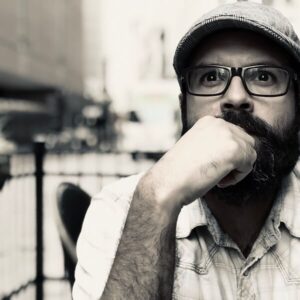
Luis Cruz-Martinez, AIA, LEED AP was raised in the small town of Camuy in the Caribbean Island of Puerto Rico. In early 2000, after earning his undergraduate degree in Environmental Design he moved his life from the island of Puerto Rico to the desert of Arizona and is proud of being a part of Phoenix’s thriving design community ever since. The journey began with as a pursuit of a Master of Architecture which has led to a lifetime development. Along the way he has been incredibly lucky, crossing paths with extraordinary individuals who have pushed, challenged, and educated him, shaping his craft and life in unparalleled ways. These mentors have had a great impact in developing his passion for coaching and encouraging the development of younger members of our community, helping them achieve their maximum potential, just as he was similarly shaped.
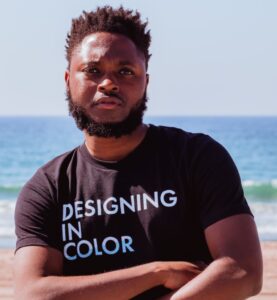
Christopher Locke was raised by a hardworking and loving Jamaican family. He challenges the established practices of architecture as a black designer, spatial advocate, and filmmaker to create spaces for equitable and liberated change. He is the Co-founder of Designing in Color (DCo), an award-winning collective of architects and designers of culture. Designing in Color’s mission aims to diversify the way architecture is taught and practiced to amplify marginalized communities who’ve been historically silenced and erased throughout the design process. Working throughout the country, DCo facilitates educational programming, creates workshops, designs socially responsible projects, and distributes digital initiatives, each meant to dismantle the systemic racism built into the practice of architecture.
Full-time he is also currently a job captain at Steinberg Hart in LA. As a designer, he has experience working on affordable housing, workplace offices, and educational services all uniquely created to its spaces equitable for its users.
Christopher is also a member of SoCal NOMA where he is actively engaged in youth mentorship through the organization’s pipeline project summer camp. In 2017 Christopher co-founded small talks:LA, a community-based project created to assemble a network of people and construct safe spaces to unify the disparate voices of Los Angeles. Operating as “pop-up” events, this program is an opportunity for all members of a community to engage in dialogue about the current state of their environment and how to change it. With the creation of Designing in Color and small talks: LA, he uses filmmaking as a method to study the current housing crisis across the city as a means of telling stories for narratives unknown. As a creative he believes that new processes that center black and brown voices as the expertise of design innovation can create a more just society that unbuilds racism and white supremacy in the built environment.

Rubin Quarcoopome loves a good story. From his childhood days in Ghana hearing his father’s tales of the mischievous Anansi to his adolescence in Detroit absorbing anime and movies and video game narratives, the allure of riveting tale helps him understand and empathize with the world and its people. As an adult, Rubin’s artistic work latched onto photography and digital painting. He relishes the exploration of the afrofuturist and the afrosurrealist, finding exciting ways to make the ordinary weird, and the weird ordinary. His work focuses on telling Black stories and opening doors and ways for others in the BIPOC community to thrive. His work in the architectural field responds to that same passion. He seeks opportunities to center communities and tell new stories, all while having gained experience designing movie theaters, office spaces, and industrial facilities for major clients.
Rubin’s artistic and architectural work overlaps with his start-up, Designing in Color, an organization he co-founded with longtime colleagues meant to diversify the way architecture is taught and practiced. As the chief of design, his various contributions have given vision to the concepts he and the team presented at Harvard University, the AIA National Board, and NOMA Conferences, among many other workshops, lectures, and speaking engagements.
His work has been featured at the Bellevue Arts Museum and the Langston Hughes Performing Arts Institute, as well as published in Blank Space’s Fairy Tale anthology, Moevir Magazine, and Vigour Magazine.
